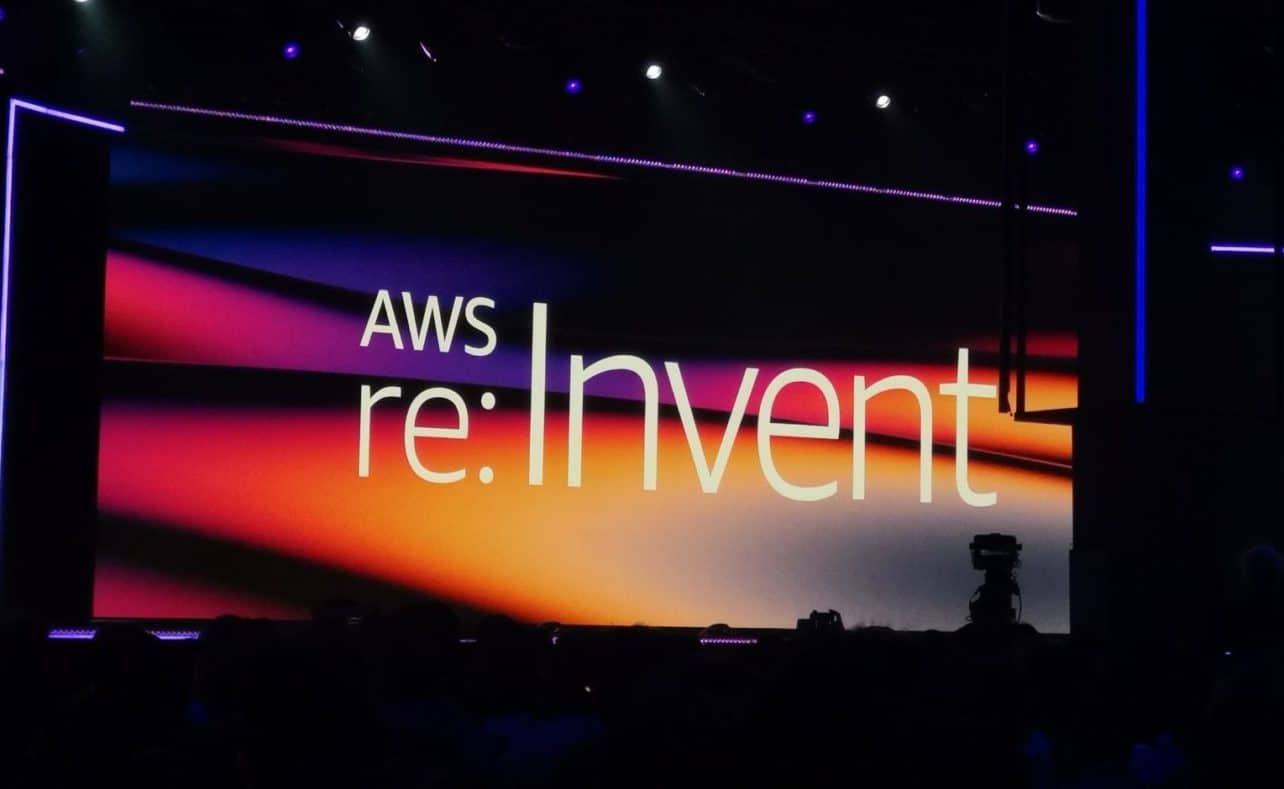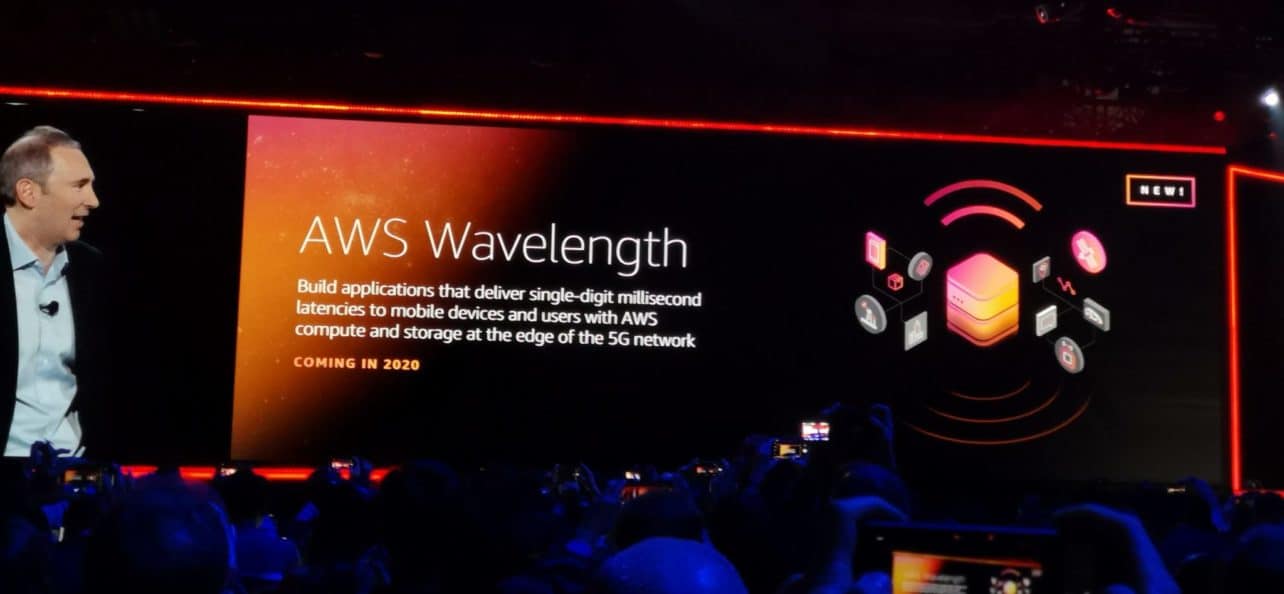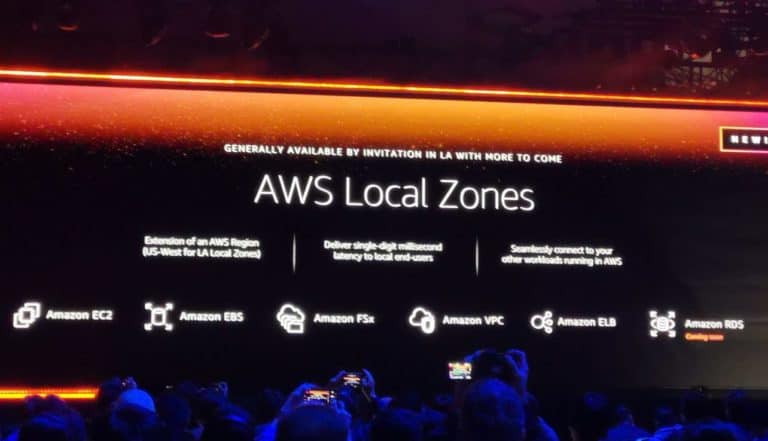At Amazon Web Services (AWS), they don’t like sitting still. In addition to introducing one cloud service after another, they also don’t sit still with their infrastructure planning. The introduction of local zones was hidden in Andy Jassy’s three-hour keynote during AWS re:Invent. However, for good listeners, it heralds the next dominant development.
With AWS Local Zones, Amazon Web Services is going to expand their network significantly in the coming years. What AWS does with such a local zone is to reduce the latency between the customer and the AWS workloads. The obstacle of computing power, memory and storage has been a thing of the past for several years. The cloud is so scalable that you can start up thousands or even tens of thousands of machines at the push of a button. The obstacle they can’t just take away is the speed of light, the light shooting through the fiber-optic cable. That is the limiting factor between the customer and the nearest AWS region. Plus a possible connection with the customer’s provider. That can also be an obstacle, more about that later.
Reducing distance to the customer
If the speed of light is the limiting factor, especially when we talk about latency, then the solution is to reduce the distance to the customer. That’s what AWS will do with local zones. They build a data center in a city where they currently have no region and then call it a local zone. If your company is located in a city where AWS already has a region, then you already have a local zone. Technically there is no difference to reduce this latency; it’s really about the distance.
Local zones are ideal for workloads with single-digit latency.
The first city with a local zone is Los Angeles, a real metropolis with enough potential for Amazon to try this new product. Currently, the local zone is only available by invitation and in preview. What exactly is the purpose of the local zones and what we can expect we have found out for you in an interview with AWS Director and Technical Advisor, Joshua Burgin.

Which workloads are suitable for a local zone?
We talked to Burgin about the introduction of local zones and what kinds of workloads we are going to see in a local zone. Burgin states: “Local zones are very suitable for workloads with single-digit latency”. By this, he means a latency smaller than 10 milliseconds. A good example of this is the creative people who want to edit and render videos in the cloud, something that happens a lot in Hollywood (Los Angeles). Running game servers for multiplayer gaming is also more enjoyable in a local zone. The latency is lower, giving gamers the best experience. Especially if there is also VR or AR involved.
Developments in the field of unified workspace technology can benefit greatly from such a local zone. Something we are going to hear a lot about in the coming years.
Burgin also states that local companies that no longer want their own data centre can benefit from such a local zone. In principle, they can already move everything to the cloud and put it in an AWS region, but if they have business processes that depend on low latency, they can do so through a local zone. It can even be combined with AWS Outposts. This involves installing a rack of AWS hardware at the customer’s premises – e.g. to cache certain data – and moving the rest to the local zone. This way, for example, real-time analytics can be carried out to monitor business processes. Although a company may not be completely rid of its own data center, that one rack is fully maintained and managed by AWS.
A local zone can best be compared to an availability zone within a region.
The differences between a region and a local zone
We asked Burgin what exactly is the difference between a region and the local zones. Especially technically, this may or may not be decisive for companies. Burgin states: “A local zone can best be compared to an availability zone within a region”. A local zone is always within an acceptable distance of a region, on which it is ultimately partly dependent. Just like any other data center, a local zone has redundancy in the form of power, connectivity, compute, etc. If customers follow AWS best practices when building a solution, the chance of downtime is, therefore, very low. However, what a local zone does not have is an availability zone. If, for whatever reason, the entire data center in which the local zone is located goes down, then the fallback is the AWS region. This allows certain processes to continue running, but with latency that always is a bit higher.
Burgin clearly states that AWS uses all available technology that it has developed in recent years to prevent downtime. Both the technology in the regions and the technology it has developed for Outpost will be used to prevent malfunctions. The focus on a good uptime and the guarantees that AWS offers per service, therefore, remain unchanged.
Offer and price tag of a local zone
New AWS services are available within a local zone. AWS chooses to offer a limited portfolio in a local zone. At the moment, this mainly concerns compute, storage and database services. However, AWS expects that some more services will be added. In addition, it is possible to link directly to an AWS region where other workloads of the company are running.
The costs for a local zone are slightly higher than for a region. Exact prices are not yet known, but Burgin stated that AWS looks at the costs and then at how sharply they can offer it. When asked whether prices will differ between local zones in the future, he stated that this is obvious. After all, this is also the case for the various regions. Some regions are more expensive than others; this also applies to local zones.
How dominant will AWS become with local zones?
We had quite a few questions about the vision behind the local zones, but here Burgin came to a standstill. At AWS, it was clearly agreed that ambitions and infrastructure planning should not be discussed. However, the fact is that edge computing is going to be very large; various companies have already convinced us of that. If soon everything is connected to the Internet, which is still passive at the moment, a lot of computing power will be needed at companies. However, they don’t want to have a complete data center in-house, and a local zone can be very useful.
Other companies are already busy setting up smaller data centres around large cities, mainly in the United States and Europe. The aim is to offer low latency solutions there in particular. Until now, these companies have not been affected by the large hyper-scalers such as AWS, Google and Microsoft. AWS is now the first to change this. Burgin told us that expectations are very high. He also let us know that AWS Outposts has been available since the beginning of December and that the on-premise solution of AWS is performing above expectations. An on-premise solution maintained and managed by AWS; such local zones are very popular. The question is, how quickly will AWS expand the number of local zones. He did not want to make any statements about this, except for the standard statement that AWS always looks at “customer demand”. If many customers ask for a local zone in Amsterdam, there will be a local zone in Amsterdam. If there is a lot of demand from Maastricht, Luxembourg or Sicily, then the local zone will be created there, as long as it is technically feasible.
Although the local zone is in preview, the solution is not
When AWS announced AWS Outposts last year, the hardware, software and overall technology were still in development. It is now finished, and the product is coming out of preview and will be widely available. The local zone is now also in preview, which means that the necessary technology for a local zone is finished. In this case, AWS needs to look at how much demand there is. Now that the first local zone is available, large companies will automatically attract AWS for more local zones. Based on that feedback, they will choose other locations. That can then happen very quickly.
We suspect that they will not build their own data centre for each local zone, but that they will also be satisfied if they can rent space in existing data centres that have their infrastructure in order. If that is not the case, they will have to build their own. In theory, AWS could easily open dozens to hundreds of local zones in the coming year and suddenly become incredibly dominant with edge data centers. The local zones could, therefore, be a danger to local players.

Country-wide low latency through Wavelength
With a local zone, AWS can currently only offer low latency in the city where the data center is located. What if a company needs low latency everywhere? AWS has come up with a solution for this as well. It will become available in the United States, a large part of Europe, South Korea and Japan. AWS will collaborate with four telecom providers to offer AWS Wavelength. This will enable them to offer low latency via 5G, once rolled out.
In the United States, AWS is working with Verizon and in Europe with Vodafone. The customer connects to the telecom network via 5G, and with the new bands and 5G technology, there is a low latency connection directly to the network of the telecom provider. Next, AWS places special hardware, which is based on Outposts, in the network of the telecom provider. This enables the workloads of customers to be carried out directly so that low latency can be offered everywhere.
This product goes a few steps further, and is likely to become even more expensive. However, it does offer a solution for mobile solutions that require low latency. Think, for example, of self-propelled cars, drones or self-propelled trains. Soon they will all need a low latency solution. Wavelength will actually be the superlative of local zones, but as said, it will become even more expensive, and availability will probably take a little longer.
